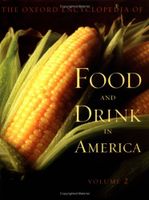“Sauce” has had two seemingly disparate meanings in the American kitchen. Seventeenth- and eighteenth-century Americans used “sauce” to denote, first and consistent with modern usage, fluid embellishments for foods, and, second, garden fruits and vegetables, either raw or cooked. The unifying logic was that both accompany the main victuals. The receipt for pumpkin “sause,” in New England Rarities Discovered (1672) by the English visitor John Josselyn called for gently cooking diced pumpkin without any liquid until it reached the consistency of “bak’d Apples.” Flavored with butter, ginger, and a little vinegar, the dish sounds almost like the cranberry or apple sauces that are considered relishes in later times. This “sauce” was a substantial side dish in the eighteenth century. Popular through the nineteenth century were vegetable sauces in which cooked vegetables, such as mushrooms, chopped onions, celery (some recipes called for pieces as large as one inch), and asparagus tips, were added to a thickened butter or cream base and served with specified meats. Occasionally seen after the eighteenth century, these recipes were linked to the archaic meaning of “sauce.”


